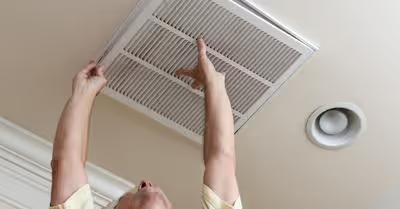Table of Contents
About Mortgage Refinancing
Making monthly mortgage payments is not always easy. First, there is the issue of the high interest rates that most mortgages come with. Second, an unstable economy may affect your finances, making it tough for you to keep up with your mortgage payments. And this is where mortgage refinancing comes in.
Mortgage refinancing involves replacing the current home loan with a new one. It’s designed to help you replace an unsustainable or unsatisfactory home loan with one you can comfortably live with, over its term.
With a refinancing, the existing mortgage is first paid off, thus allowing a second one to be created. If you have a decent credit history, then mortgage refinancing can be a smart financial move to make, since you can use it to convert your home loan from variable to fixed. Also, it may help you to obtain the loan at lower interest rates.
Types of Mortgage Refinancing
There are 3 main types of refinance mortgages. These are rate-and-term refinance, cash-out refinance and cash-in refinance.
Rate-and-Term Refinance
This is probably the most popular type of mortgage refinance. A rate-and-term refinancing enables you to get a better mortgage than the one you currently have.
With this type of refinancing, you can change your current loan’s mortgage rate, the loan terms or even both.
For instance, if you start making more money and you can comfortably afford higher monthly payments, then you can opt to refinance your mortgage and shorten its term.
By refinancing your mortgage and shortening its term, you will be paying higher monthly payments. On the other hand, you will save more money in the end, since you’ve eliminated some years of repayment.
Cash-out Refinance
The aim of a cash-out refinance is to increase the amount of the current mortgage and tap into your home equity.
Home equity is the part of the home that you own. It’s usually the difference between the value of your home and what you owe on the mortgage.
For instance, if your home is worth $400,000 and you owe $200,000 on your mortgage, then you have approximately $200,000 worth of home equity.
The problem is, home equity is not cash. So, if you want to access it, you will have to secure a loan against your home’s value. And this is where this type of refinance comes in.
Assuming that your current loan balance is $200,000 and you want to cash out on your home’s equity, then you can apply for refinancing, which will increase your mortgage to $250,000. You will then receive $50,000 in cash.
Cash-in Refinancing
With this refinance, you will put a lump sum amount of cash into your mortgage. You can either do this to shorten your mortgage repayment period, lower your monthly payments or increase your home’s equity.
How Mortgage Refinancing Works
If you are looking to refinance your mortgage, then you will follow almost the same steps as you would, if you were applying for a new mortgage. Here are the steps to follow if you are looking to refinance a mortgage.
Determine the Refinance You Want
As noted above, there are 3 main types of mortgage refinance. So, you will first need to determine the type of refinance that you want.
Choose a Lender
Once determined the type of refinance you are looking for, you should then choose a lender that offers the best terms for that particular type of refinance.
It’s advisable to get at least 5 quotes from different lenders and then settle on a lender who offers the terms you are looking for.
Apply for the Loan
The loan application process will vary from one lender to the other. And the lender you’ve selected will take you through the steps you need to follow.
Make sure you review the loan’s terms and fees before signing the paperwork to know what to expect and avoid surprise costs down the road.
How Much Does it Cost to Refinance a Mortgage
Closing costs for a mortgage refinance will depend on the lender you’ve chosen, the amount you are borrowing, and your home’s location.
But on average, it will cost you approximately 3% to 6% of the loan amount. Therefore, if your loan amount is $200,000, then you may end up paying $12,000 on the higher end and $6,000 on the lower end.
Mortgage refinance closing costs usually include the refinance application, title search and a new home appraisal, home inspection fee, origination fee, lender’s attorney review fee and point fees.
However, you can avoid paying the mortgage point fees if you request a zero quote or par quote.
Mortgage Refinancing Pros
Depending on the type of loan that you qualify for, refinancing a mortgage can offer you a wide range of benefits such as:
Lower Monthly Payments
Refinancing a mortgage and securing one with a lower monthly payment can help to minimize the financial strain that you may be facing.
For instance, you can increase the loan term from 15 years to 30 years, thus reducing your monthly payments. With reduced monthly payments, you will have more money in your pocket to meet your pressing financial obligations.
Shorter Repayment Period
Refinancing a mortgage to a shorter repayment period can help you pay off your home faster. For example, you can switch from a 30-year mortgage to a 15-year loan.
Besides helping you to pay off your home faster, refinancing to a shorter repayment period will also help you save money on interest payments.
Switch to a Fixed Rate Loan
Adjustable-rate mortgages (ARM) tend to be unstable and unsustainable. For instance, if the interest rates increase, then you will be forced to pay higher interest rates on your mortgage.
By refinancing your mortgage to a fixed rate, you eliminate any possibility of the rates going up in the future. Furthermore, it will help you to plan your monthly expenses and budget accordingly.
Get Cash to Fund Big Projects
If you have a substantive amount of equity on your home, then a cash-out refinance can help you get some extra cash, which you can use to fund various projects.
For example, you can use that extra cash to renovate your home, start a business, consolidate your debts, pay college fees, or attend to a financial emergency.
Mortgage Refinancing Cons
While refinancing a mortgage comes with numerous benefits, it’s not the right move for everyone. And just like everything else, it also comes with its fair share of drawbacks. Here are some drawbacks of refinancing a mortgage:
Restarts Your Repayment Clock
Assuming that you had already paid down your mortgage for 10 years, and you opt to refinance to a 30-year mortgage, then you will restart its clock.
If you have had your mortgage for a long time and you decide to refinance it, then you will end up restarting the amortization process.
And this means that a huge portion of your monthly payments will go towards paying the loan’s interest again as opposed to building home equity.
Could Increase Your Monthly Payments
Refinancing a 30-year mortgage to a 15-year mortgage may help you to pay off it faster. However, it also increases the monthly payments. And this can put a significant strain on your finances.
When to Refinance a Mortgage
If you have an adjustable-rate mortgage, your current mortgage has a high interest rate or the length of your mortgage is more than 15 years, then refinancing your mortgage makes sense.
In all the above situations, refinancing the mortgage will lead to more favorable terms. For instance, if you refinance from an adjustable-rate mortgage to a fixed-rate mortgage, you will avoid the risks of your monthly payments increasing when the rates adjust.
On the same note, if your current loan has a higher interest rate than the current market rate, then a refinance will be a smart financial move. It will help you to lower your interest rates or even reduce your payment duration.
When You Should Avoid Refinancing
Refinancing a mortgage is not always the best move. So, when should you not consider a refinance?
First, mortgage refinance will not be a good idea if you have had your mortgage for a long period.
If you’ve had your mortgage for a long time and you opt to refinance it, then you will end up restarting its clock. Consequently, it will take you longer to pay off the house.
Second, if you are planning to move from your house in the next few years, then you should avoid a refinance.
As noted earlier, a refinance incurs closing costs of approximately 3% to 6% of the loan amount. And as you may probably know, it will take quite some time for the interest savings realized from the refinance to offset your upfront costs.
Therefore, if you are planning to move soon, then a refinance will not make financial sense.
Should You Refinance a Mortgage?
Without a doubt, refinancing a mortgage comes with more benefits than drawbacks. However, deciding whether to refinance a mortgage or not always is not a straightforward answer. You will first need to weigh the pros against the cons. From there, you can then determine whether a refinance is worth pursuing, depending on your personal situation.
Recent Articles
















